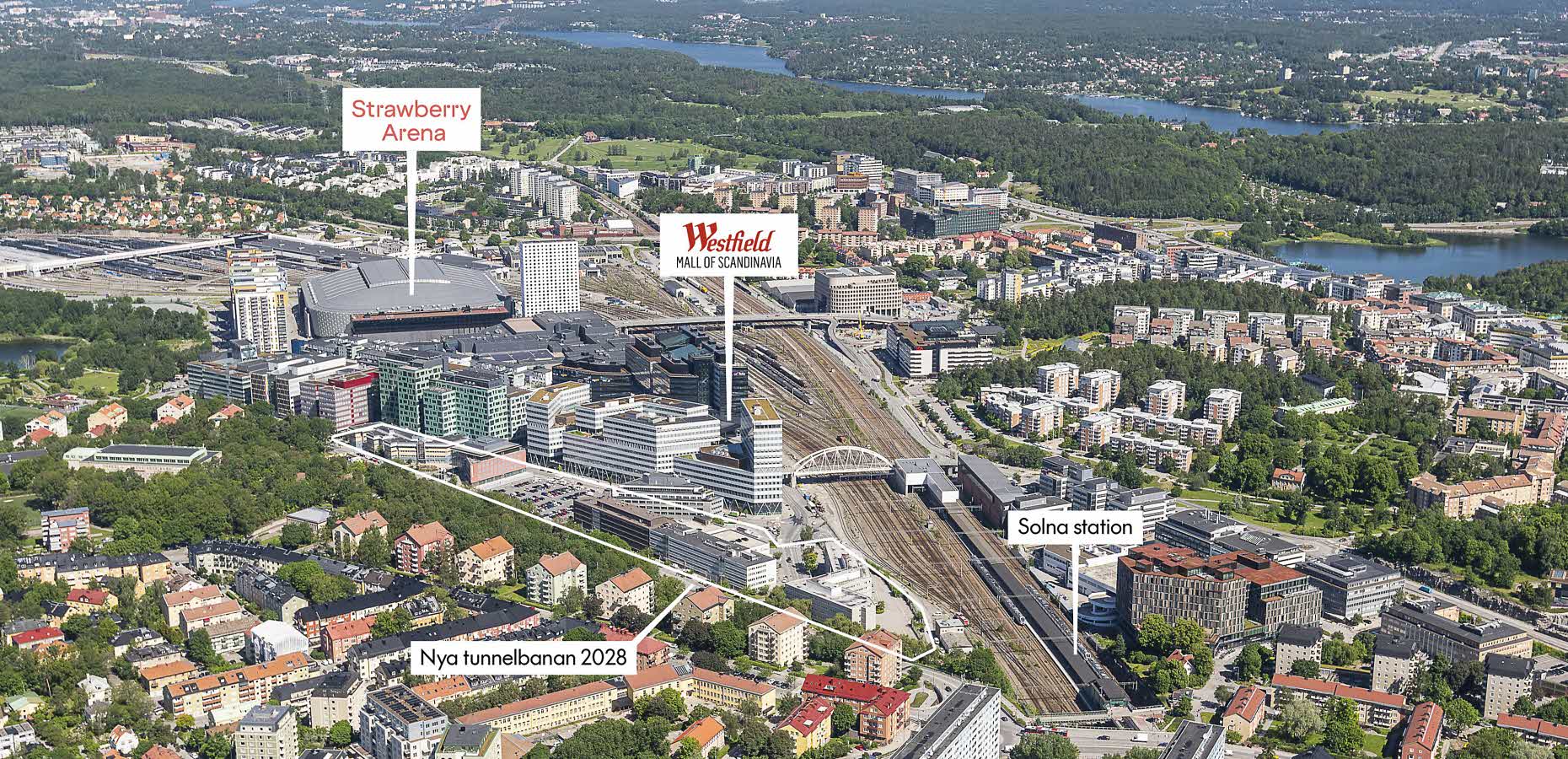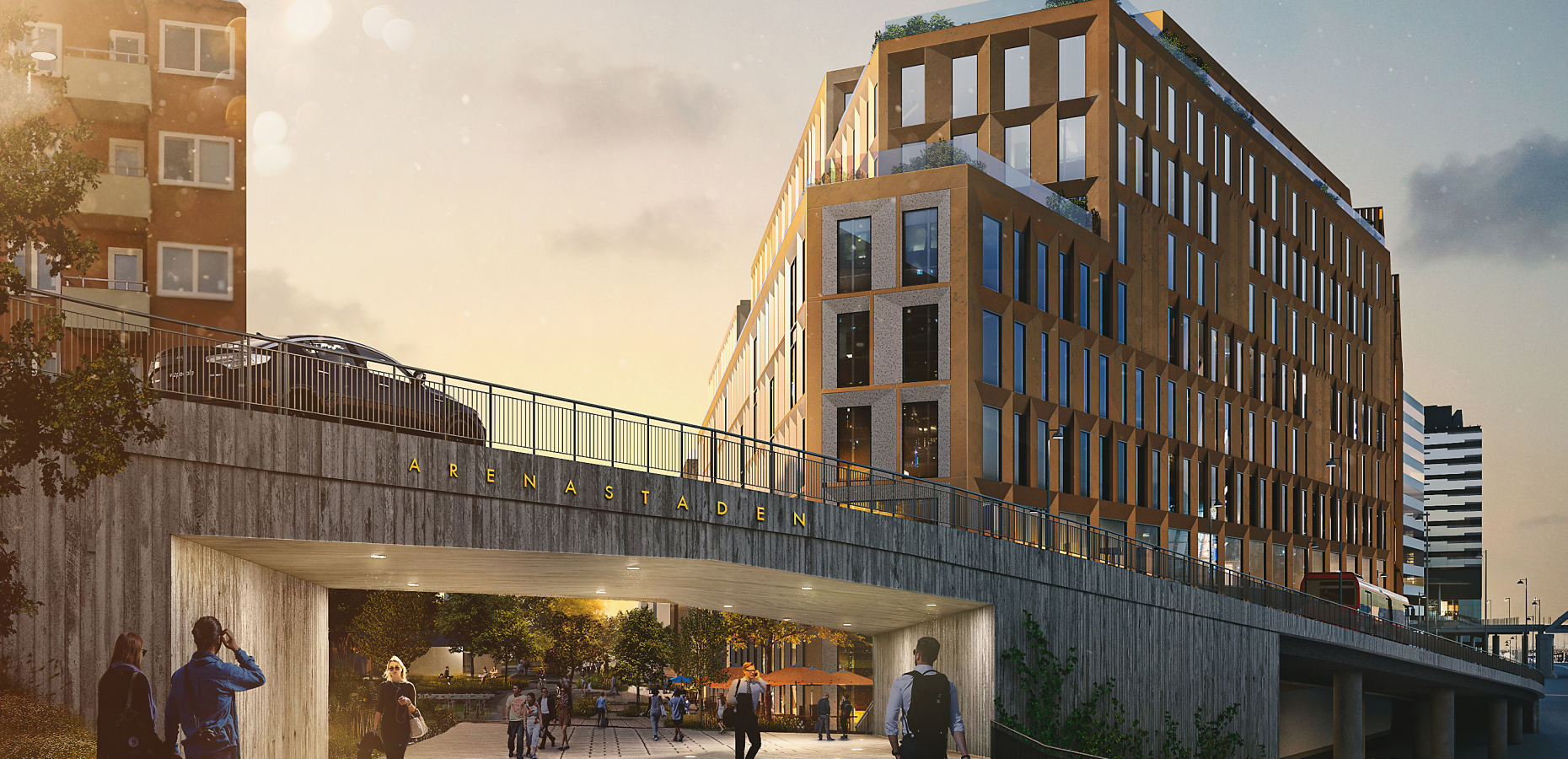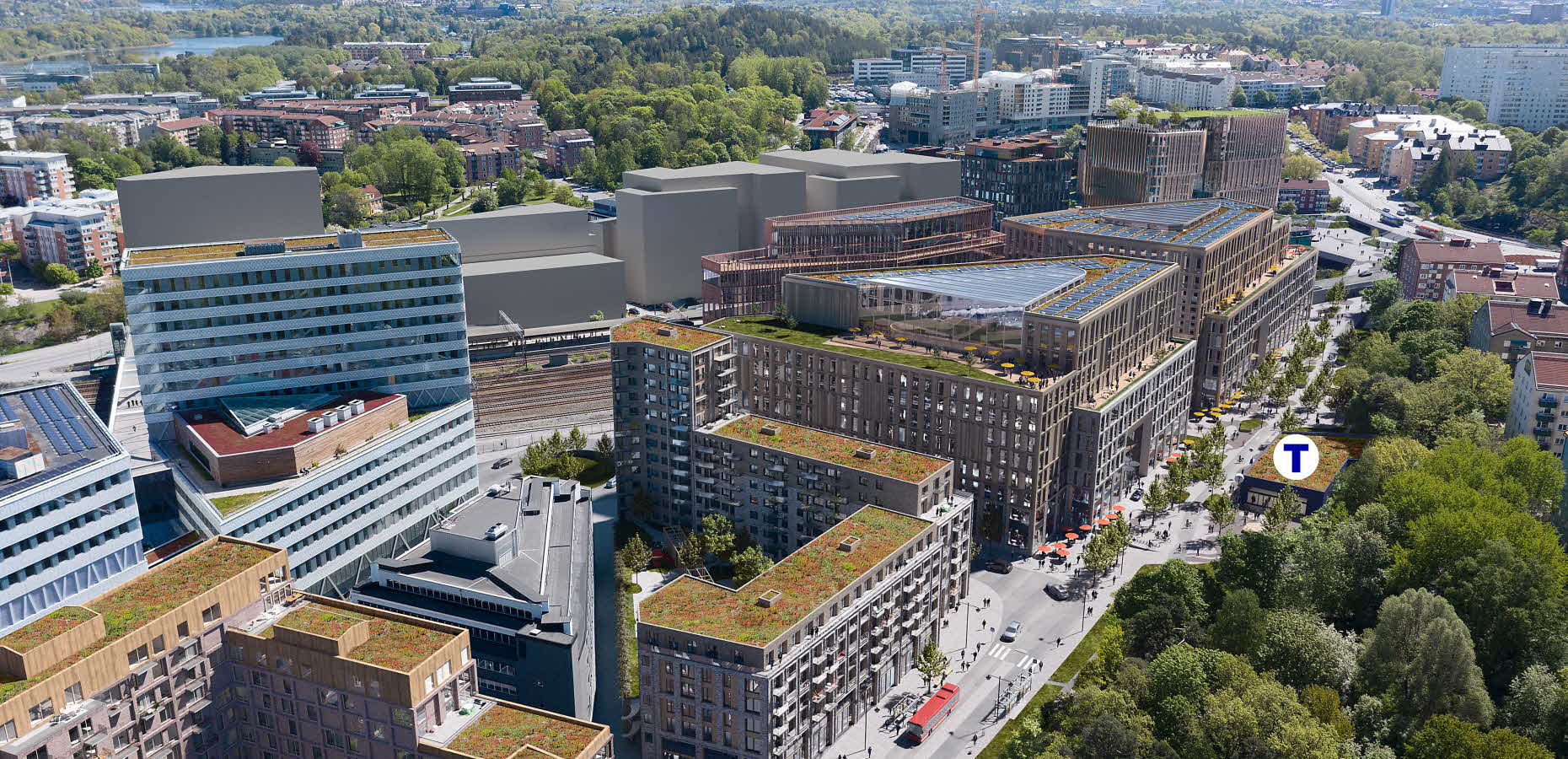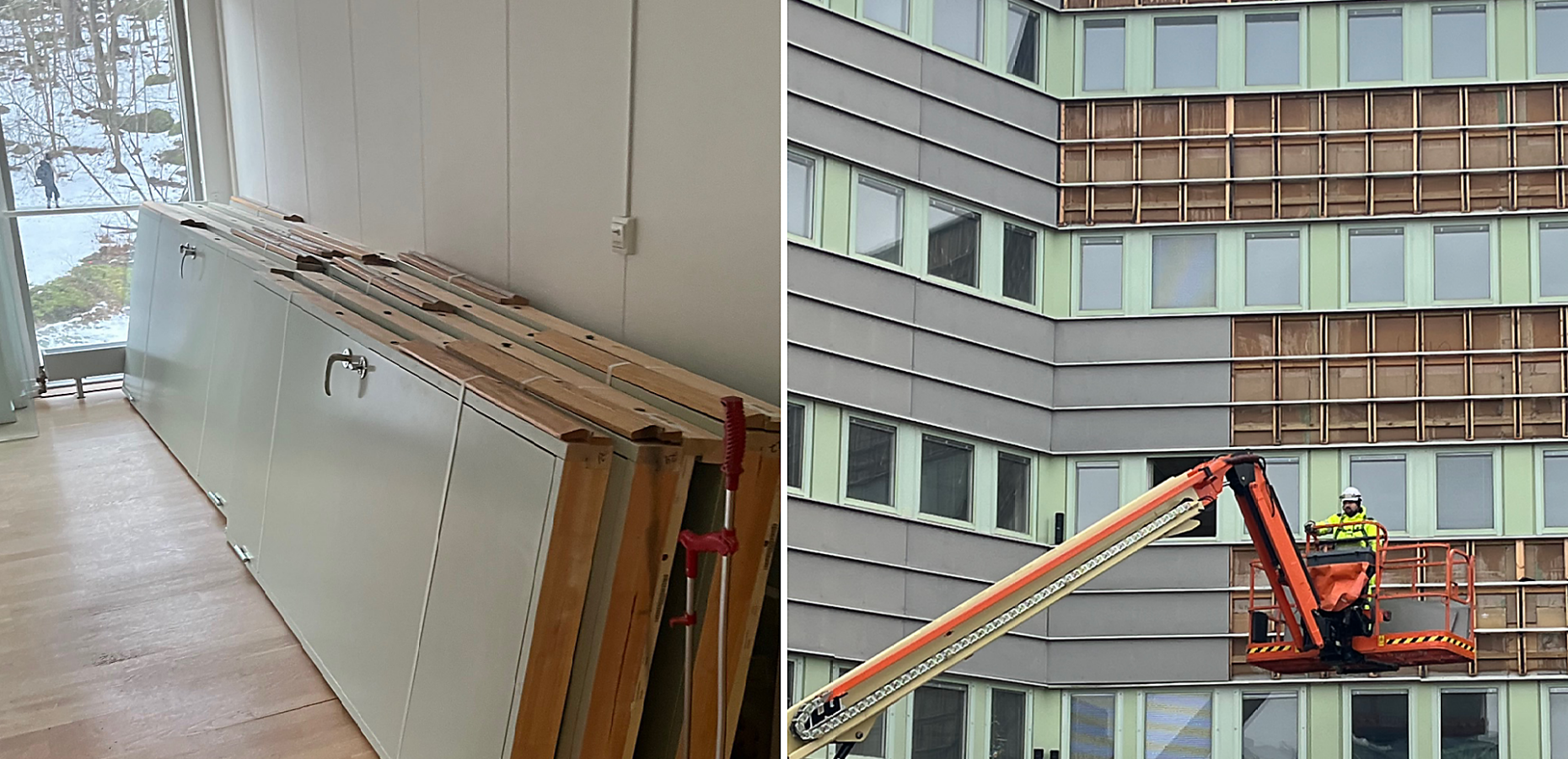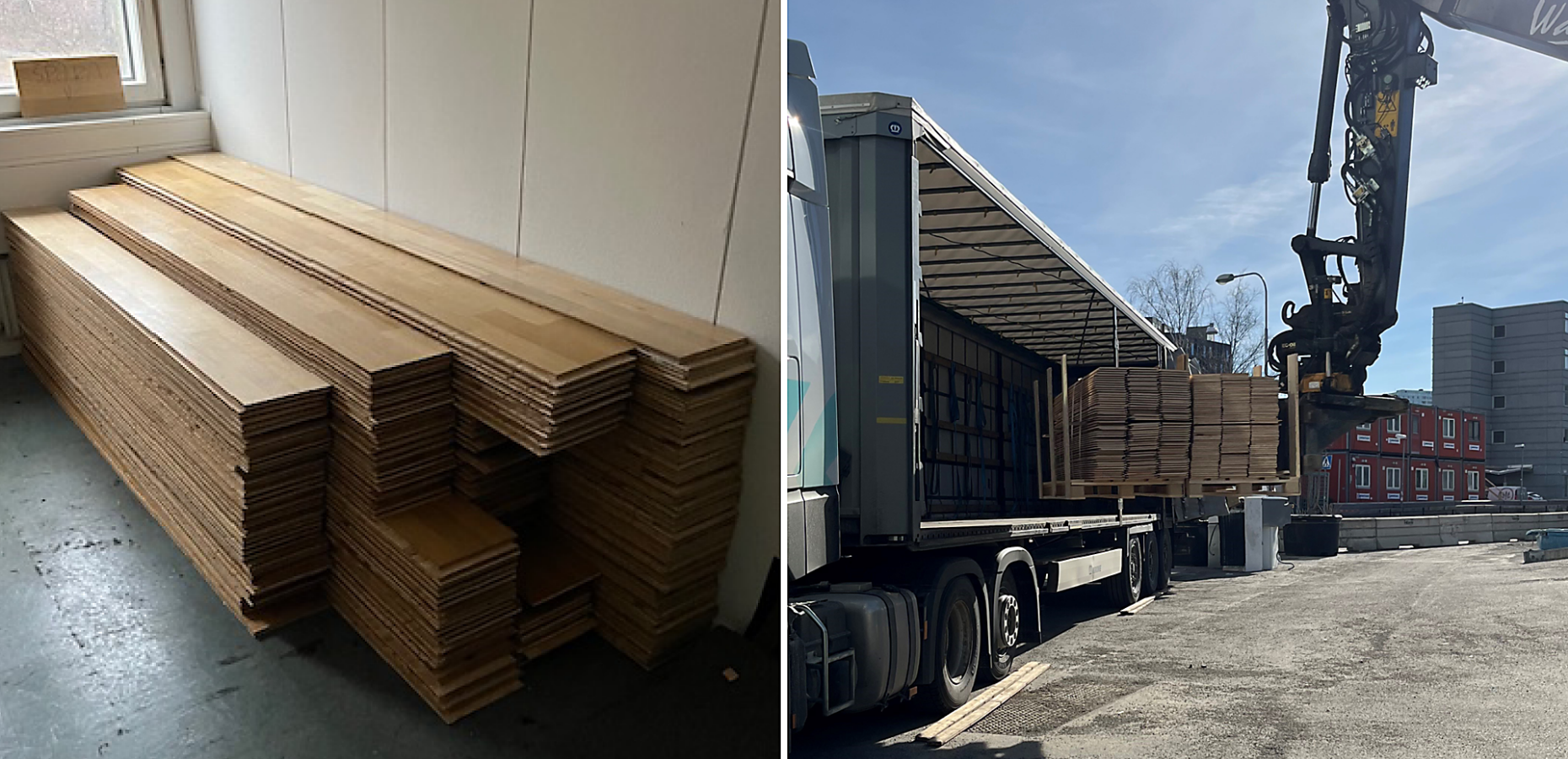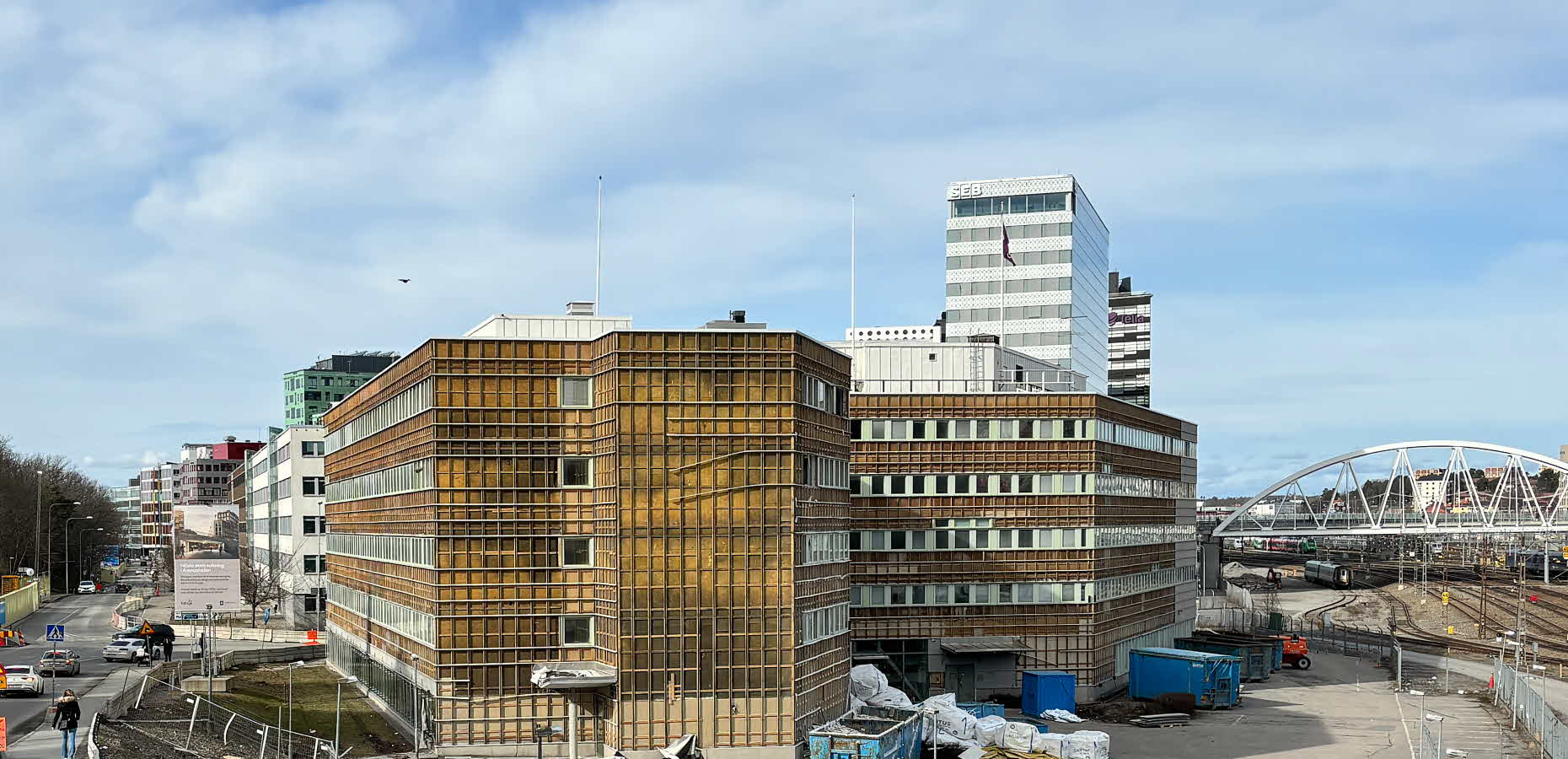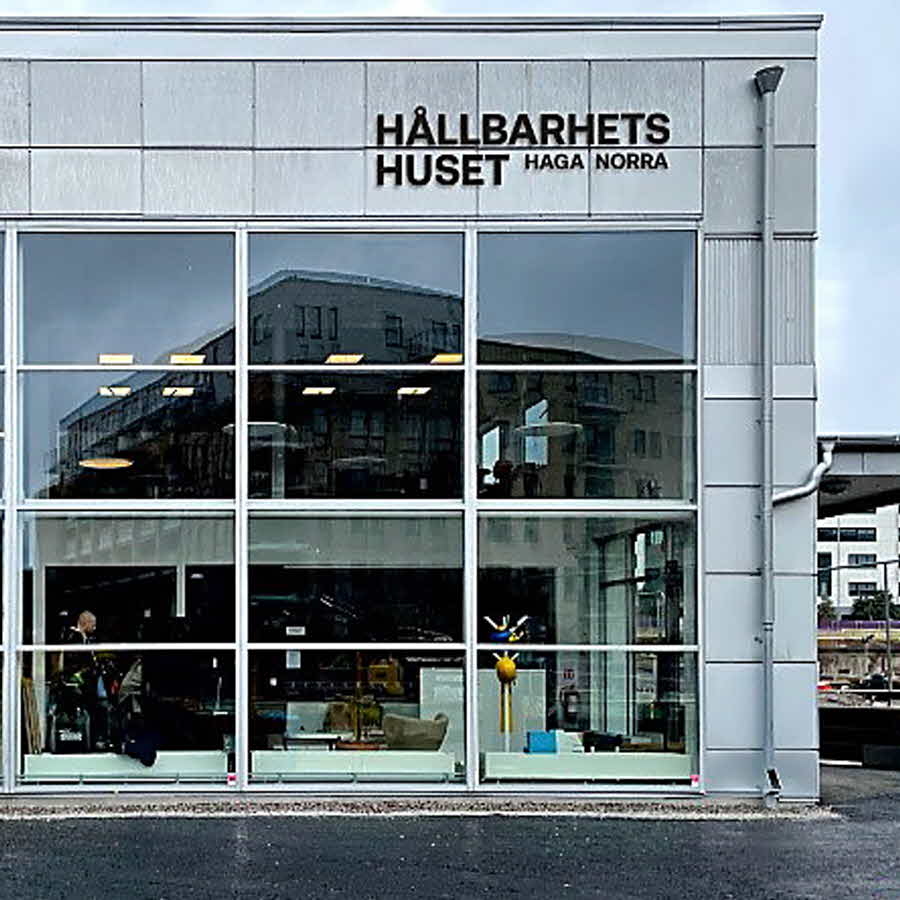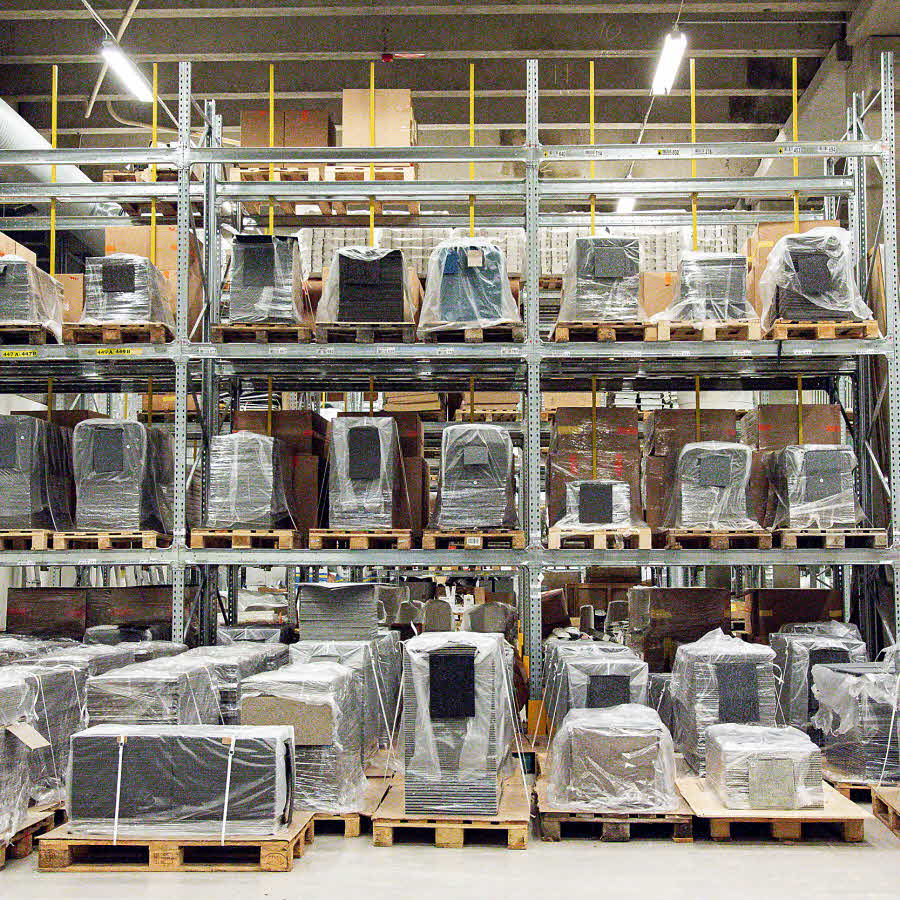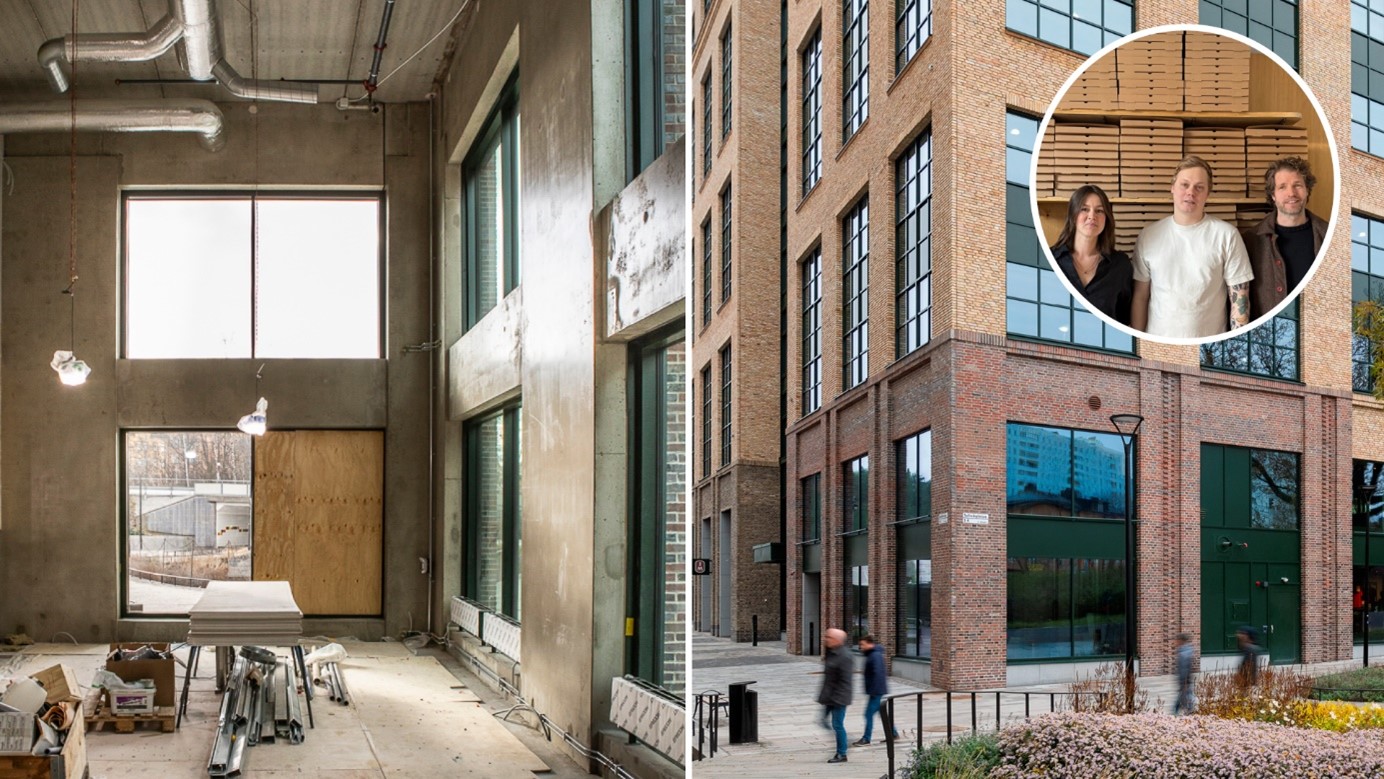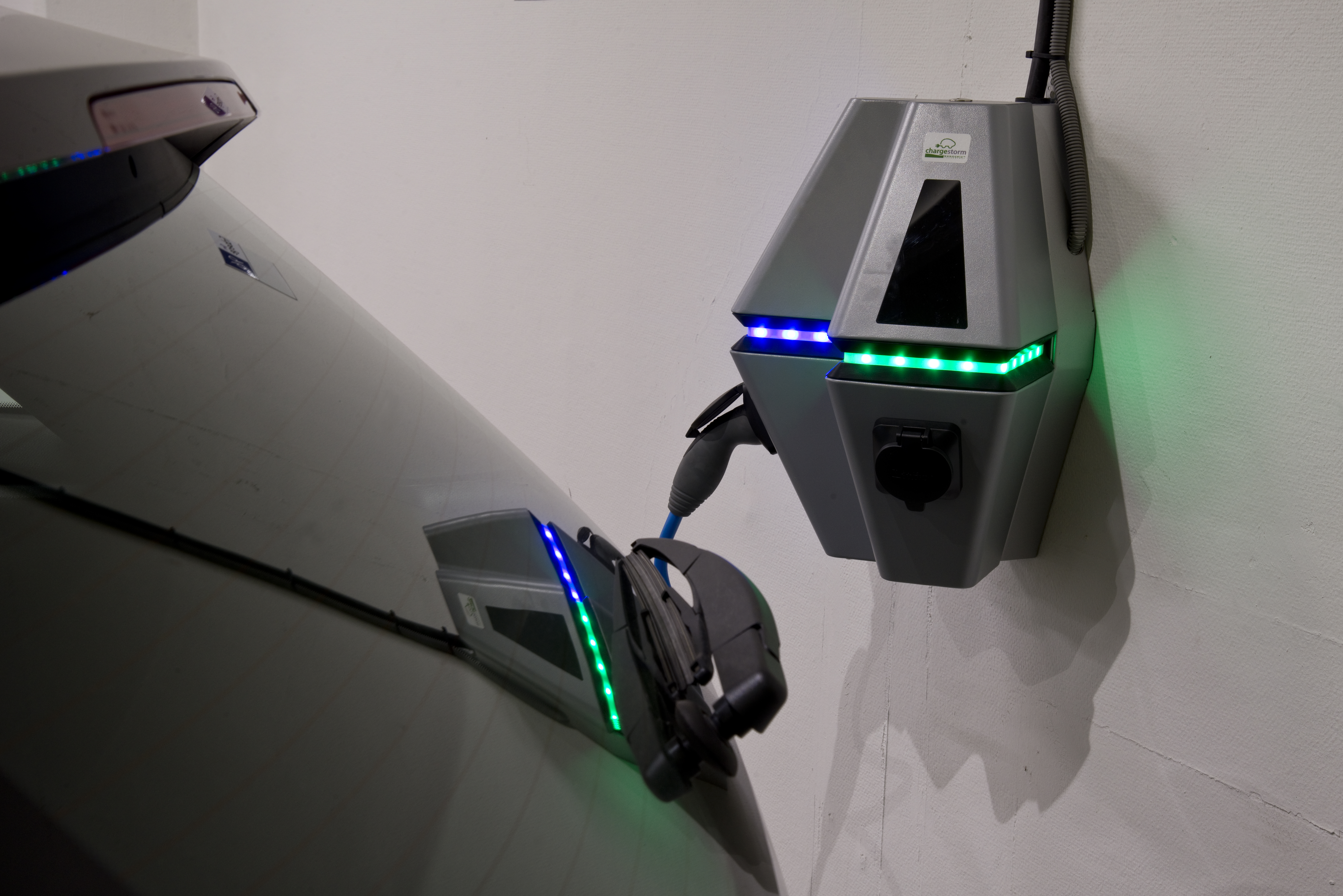The initial investments include the dismantling of existing buildings and the moving of the roadway to enable Dalvägen to be made into a modern mixed-use urban street.Future investment in the construction of new office buildings and housing are dependent on market conditions and the signing of lease agreements with key tenants.
“The most likely scenario is that we will start building the offices located closest to the commuter train station and next to the future metro station. That is also the site of the first property that is being dismantled. But interest and the market will determine which one is built first,” says Johan Zachrisson, Head of Business Development at Fabege.
Arenastaden's new urban street
Today, there are more than 30,000 workplaces and 3,000 residents in Arenastaden, and 15 million people pass through every year. Fabege is now continuing Arenastaden's development opposite the new metro station (which will open in 2028) by adding office blocks, further housing, service outlets and restaurants on the ground floors. Along Dalvägen, pedestrians, cyclists and public transport will be given priority as cars and other road traffic are diverted to pass alongside the railway line. Everyone who lives in, works in and visits Arenastaden can easily travel there sustainably by metro, light rail and commuter train.

